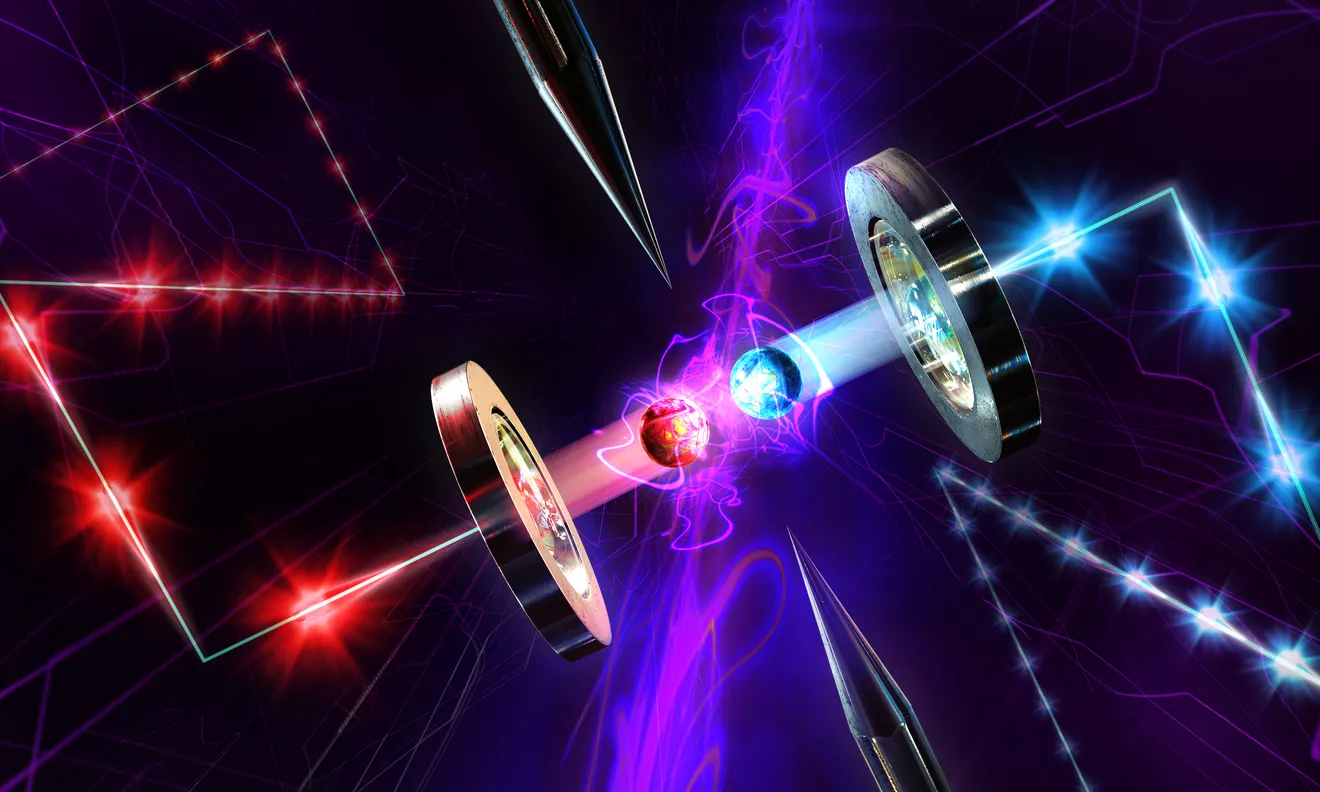Around 25 years ago, the first proposal on how to convey quantum information through quantum repeaters for long distances, opening the path to the development of a universal quantum information network was made by theoretical physicists at the University of Innsbruck.
 A fully functioning network node made with two single matter systems enabling entanglement creation with a photon at the standard frequency of the telecommunications network and entanglement swapping operations. Image Credit: University of Innsbruck
A fully functioning network node made with two single matter systems enabling entanglement creation with a photon at the standard frequency of the telecommunications network and entanglement swapping operations. Image Credit: University of Innsbruck
Currently, a new generation of Innsbruck scientists has constructed a quantum repeater node for the standard wavelength of telecommunication networks and transferred quantum information over tens of kilometers.
Quantum networks connect quantum sensors or quantum processors. This facilitates tap-proof communication and high-performance distributed sensor networks. Among network nodes, quantum information is transferred through photons that pass through optical waveguides.
However, the possibility of photons being lost maximize intensely over a long distance. As quantum information cannot be just amplified and copied, a quarter of a century ago Hans Briegel, Wolfgang Dür, Ignacio Cirac, and Peter Zoller, then everyone at the University of Innsbruck, offered the blueprints for a quantum repeater.
These feature light-matter entanglement sources and memories to produce entanglement in independent network links that are associated among them by a supposed entanglement swap to finally allocate entanglement over long distances.
Even Transmission Over 800 Kilometers Possible
Quantum physicists guided by Ben Lanyon from the Department of Experimental Physics at the University of Innsbruck have now been efficient in constructing the core parts of a quantum repeater—a completely functioning network node built with two single matter systems facilitating entanglement formation with a photon at the standard frequency of the telecommunications network and entanglement swapping operations.
The repeater node comprises two calcium ions entrapped in an ion trap inside an optical resonator along with a single photon conversion to the telecom wavelength. The researchers, therefore, demonstrated the quantum information transfer over a 50-Km-long optical fiber, with the quantum repeater kept precisely halfway from the starting to the end point.
The Scientists could quantify which improvements of this design would be essential to make transmission over 800 km likely, which would enable the connection between Innsbruck and Vienna.
The existing findings were published in Physical Review Letters. Financial support for the work was offered by a START award from the Austrian Science Fund FWF, the Austrian Academy of Sciences, and the European Union, among others. Lanyon’s team is part of the Quantum Internet Alliance, an international project under the EU Quantum Flagship.
Journal Reference:
Krutyanskiy, V., et al. (2023) Telecom-Wavelength Quantum Repeater Node Based on a Trapped-Ion Processor. Physical Review Letters. doi.org/10.1103/PhysRevLett.130.213601.